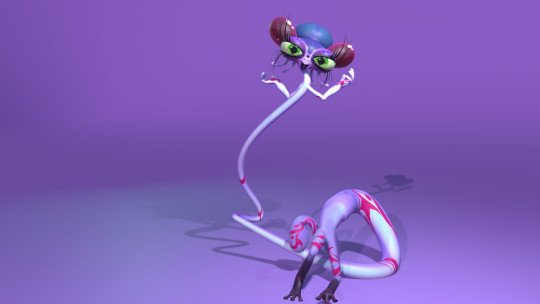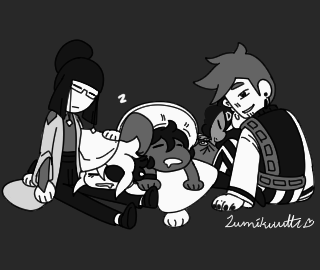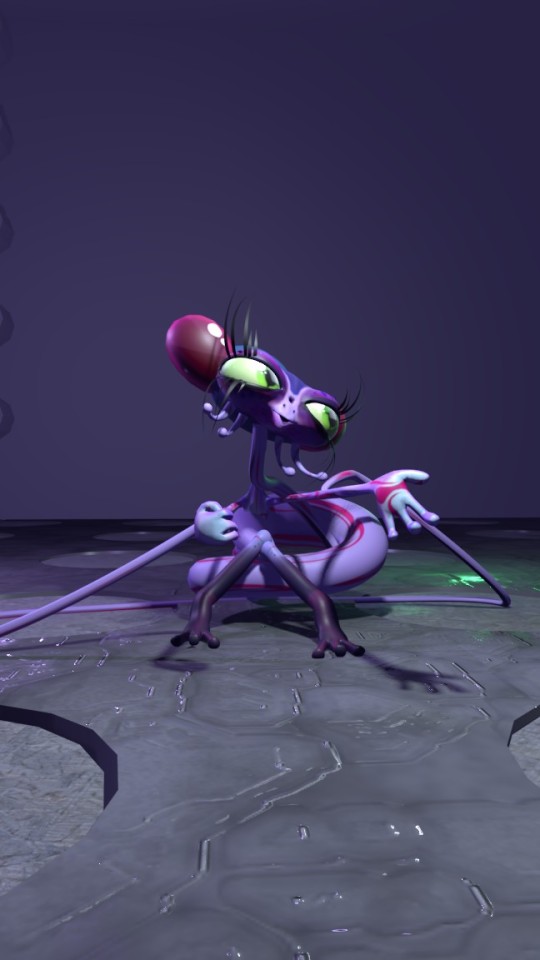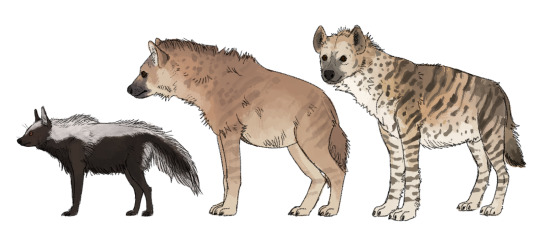#strecthing
Explore tagged Tumblr posts
Text

¡recuerda! nosotras las glèublilas puedemos estirarnos y cambiar nuestra figura
#original character#original art#elastic#strecthing#elastigirl#plastic#creature#3d#stretchy#super powers#superpower
4 notes
·
View notes
Text

The pylidaigh, a type of vampiric snow ghost, as imagined in folklore in and around the Highlands.
This is a ghost believed to come into being when a person dies in the snow and their body is not found before their soul (still trapped without its funeral rites) 'freezes' inside of it. The body then reanimates into a pylidaigh's twisted form. It looks like someone who slowly died of starvation, just a thin layer of flesh over bones. Its skin is as white as the snow itself, so pale it can blend seamlessly into a blizzard. Most of its body appears subtly stretched and lanky, save for its exceptionally unsubtle long, skinny arms, which drag on the ground behind it when it walks. After a big meal of blood, its belly swells like the abdomen of a tick.
A pylidaigh can only tread across snow and ice, and so doorways and windows are best kept clear of snowfall during the winter in order to prevent it from reaching inside. It mostly comes out to hunt during blizzards when there is little that can prevent it from catching its victims.
In spite of its fragile appearance, a pylidaigh is supernaturally strong, and can run at great speeds when it wants to. No mortal weapons can pierce its body, nor can any bonds known to craftsmen hold it in place. It is usually said that chains forged like iron but made out of ice can bind a pylidaigh and render it immobile, but this smithing technique remains tragically elusive to the average joe.
This ghost is either cast as a wildly dangerous but tragic figure, or one that is more simply malicious. In either case, it is described as experiencing nothing but bitter cold. It shivers endlessly. It retains distant memories of what it was to be alive, and it is motivated by a futile desperation to experience the feeling of warmth again.
In more sympathetic framings, it is described as using its freaky gibbon arms to capture its victims and pull them into an embrace, rather innocently trying to warm itself against their body. This inevitably fails, and the embrace becomes a bone crushing squeeze. When that too fails to warm the ghost, it rips out the person's throat and drinks their blood until the victim is as cold and drained as the pylidaigh itself.
In other cases, this more pitiable narrative of a ghost seeking warmth with no comprehension of its actions is discarded in favor of making it purely monstrous. Here it is a type of vampire with an insatiable thirst, practically a physical manifestation of the worst of winter itself. Some tales acknowledge both variants, suggesting a pylidaigh's violent attempts to warm itself may be initially devoid of malice, but turns into an act of furious jealousy of the warmth of the living after years of suffering.
The only (more or less) surefire method to permanently kill a roaming pylidaigh involves trapping it with fire. They are attracted to any source of heat, and will attempt to warm themselves with the flames (if not tempted away by a juicy living human body). The fire itself cannot kill them (as the sheer cold of their body is more powerful even than flame) but they can be trapped if kept near the fire long enough for the snow it depends upon to melt. This does not kill the pylidaigh either. The monster will remain in stuck in place (and potentially become a threat again if it snows more) for the duration of the winter. Only when the spring comes and all the snow melts does it revert into a normal human carcass (though mysteriously invulnerable to decay), at which point it can be cremated.
Pylidaigh in the wilds also revert to a human corpse during the snowless seasons, but will roam again each following winter unless it is burnt in the interim. It is of critical importance that any human corpse found in high mountain pasture is cremated- not only out of respect for the poor soul trapped as an earthbound ghost, but to prevent the threat of the possible dormant pylidaigh emerging next winter.
#Imagine this thing Naruto running towards you at 20 mph#This was loosely inspired by me getting hypothermia once while camping very close to a town but on a mountainside a few#miles above it. Think it would be considered moderate I knew what was happening but was very confused and disoriented#Knowing my body was too fucking cold and my heartbeat was too slow and I couldn't stop shivering#Looking down on the lights below and being like Bro I Have To Get There And Get Warm Or Am Going To DIE#I woke up from sleep while in this state which like. Thank god because otherwise I might have legit died but it felt like I was dreaming.#It was so surreal just like walking then driving towards the lights knowing I NEEDED to get there NEEDED to get warm.#I was able to drive down without getting into an accident and got to a hospital so it ended up okay and my arms didn't strecth#out like a gibbon or anything.#folklore#hill tribes#I've been working on a pylidaigh folktale for a few days but it's taking a while because I keep going back and fourth on whether#I'll write it in character voice or not
997 notes
·
View notes
Text

So uh you know how I've already drawn and posted like several things today? Yeah uh here have one more before I crash out lmao
#in stars and time#isat#isat siffrin#isat odile#madame odile#isat isabeau#isat bonnie#isat mirabelle#isat party#it's the family!!!#they're eepy!!!#animation#animated gif#strecthing my animation skills again#Seal does art
192 notes
·
View notes
Text
awkward silences are the answer
#its em again ₊˚ෆ#for context my dad taught me about how if someone is being an idiot or rude you just go quiet and let the silence strecth on#and they'll usually take it back bc its awkard
5 notes
·
View notes
Text

Im animatign btw ❤️
#animating is a strecth im just. drawing slideshow tbh#nothing is smooth bc im going at 8 fps. i just need to get this out of my head
22 notes
·
View notes
Text
guy guYSHELP OWE OWWWWWW I REACHED TOO FAR FOR MY IPAD AND MY SHOULDER HURTS
4 notes
·
View notes
Text
my neck muscles are so unbelievably tight aughhhhh i try to massage them and stretch but they still hurt and specifically they hurt in that wau that tells me that more massaging/strecthing wont help rn and so all i can do is wait until it goes away
#grymms spectacular fucking posts#my shoulder muscles are the same#like ik that strecthing and massaging isnt supposed to immediately help everything and can be more about long term but cmon#why xant i stop feeling like shit right nowwwwwwwww
2 notes
·
View notes
Text

acércate relájate y estírate
#elastic#estirar#strecthing#stretch#super powers#superpower#original comic#original character#creature#surreal#surealism#elastigirl#elastics
2 notes
·
View notes
Text

There are three hyaenids found within the Imperial Wardi region- the hisippate, the highland hyena (kyniche na chennandi), and the scrub hyena (kyniche). (None are actually related to the king hyena).
The hisippate (name is close in meaning to 'stinking one', sometimes instead called '(wild) ant-dog' ('kulichin-wannaukoma')) is very distantly related to the other two. They are small, mostly solitary animals that sleep in burrows during the day and emerge to hunt at night. They are almost exclusively insectivorous, and their diet consists primarily of termites and ants that are lapped up with a long, strong tongue. The hisippate has a wide range, with their populations being highest in grassland and savanna regions with a high density of termites.
They are named for their foul smelling anal gland secretions, which are used to mark their territory and can be sprayed short distances to repel predators. Their highly visible black and white coat (which is erected in threat display) indicates them as not worth the trouble of eating. This is partly an honest advertisement of its chemical defenses, but may function as mimicry of a substantially more threatening native badger that can spray with great accuracy at distances of up to 10 feet (while the spray of the hitsippate is untargeted and only potent within a meter of the body).
The highland and scrub hyenas are the most numerous and successful predators within the region, with their populations having exploded in the past several centuries with the decline of the Wardi lion. Both live in matriarchal clan structures with strict dominance hierarchies, maintained not by individual size and strength but by highly complex networks of coalitions. All members of a clan can reproduce, and young inherit rank positions just beneath that of their mothers. Most males eventually disperse, entering into new clans at the very bottom of their hierarchy. They exhibit no obvious sexual dimorphism, and females often can only be differentiated from males by the shape of their pseudopenis.
The scrub hyena is most widely distributed and can be found throughout most of the region in a variety of lowland habitats, faring best in savannah and open grassland with high populations of grazing ungulates. This species is distinguished by well-defined spots and stripes and a sparse mane, though their coloration varies by individual and population, ranging from reddish to pale white-brown. Their clans can number upwards of a hundred individuals in the most prey-dense territories, though most are smaller.
The highland hyena is unique to the northwest of the region. As the name suggests, they have specialized into surviving in higher altitude climes, but can also be found in the remaining pockets of surrounding forest (and once had a much larger range across the former northern forests). Their spotting is often less visible than their lowland relatives, though their base coloration is similarly variable. Their clan sizes are substantially smaller than the scrub hyena, as they inhabit regions with much lower prey densities.
Both are closely related (whether they are subspecies or separate species would be subject of debate by taxonomists) and can produce viable young. Heavily hybridized populations are common where their ranges overlap. Scrub hyenas appear to breed more readily with dispersing male highland hyenas than the reverse.
Hyenas occupy an overall minor space in most of the Wardi cultural sphere. They are noted negatively as man/corpse eaters, but are generally regarded as intelligent and powerful predators and avoid the stigma attached to man-eating scavengers. In most cases they are not ascribed much significance in comparison to the venerated lion or the massive and intimidating king-hyena, mostly being relegated to a threat to livestock and potential danger to lone travelers.
Many urban areas in the province of Godsmouth (including the outer unwalled portions of the eponymous city) have unique practices of not only tolerating but actively inviting scrub hyenas into urban spaces. These urban hyena populations have been genetically semi-isolated from their wilder counterparts for several centuries. Rather than hunting large prey, they fill similar roles to feral dogs in the urban landscape as cleaners of refuse and killers of pests, and benefit from their species being culturally regarded as powerful predators rather than lowly scavengers. They notably predate on the considerably more reviled feral dogs, and keep their populations much lower than other parts of the region. Their role is regarded as both a physically and spiritually cleansing force, with their presence neutralizing polluting elements (while not being sacred in of itself).
The Godsmouth hyenas show little fear of humans compared to their wild relatives, though their activity peaks at nighttime hours to avoid close contact. They are sometimes raised from cubs to be fully tamed (though are not truly domesticated) and used as guards or to assist in hunting (Godsmouth's designated dog hunters notably have traditions of keeping hyenas). This practice is essentially exclusive to the province of Godsmouth- hyenas rarely establish semi-urban populations in other parts of the region, and those who do have considerably greater fear of humans, usually sneaking in under the cover of night to feed on scraps and fleeing from encounters.
The status of hyenas varies in the other groups native to the region. For example:
Hyenas have a generally favorable status to the Cholemdinae, who have traditionally reckoned them as highest among predators, noting their stamina and intelligence. Body parts of hyenas are ascribed the ability to increase the wearer's stamina, and amulets carved from hyena bones are often worn while persistence hunting. Children born while hyenas are heard crying are considered to be strong and very likely to survive infancy (and will often be given names referencing the animals). The apparent androgyny of hyenas is allegorically attributed to the creation story- the first beings were dual-sexed, and split into male and female halves as part of their punishment for the theft of fire from the sun. The hyena escaped this punishment by digging into the underworld to hide and getting only its once long, luxurious tail chopped off (which was sticking out from the hole).
((TANGENT: The South Wardi have more recent common cultural ancestry to the Cholemdinae than to most of the other groups assimilated into the collective Wardi nationality. The notion of hyenas once having long, flowing tails that got chopped off in some mishap still appears in South Wardi animal folktales))
They have a largely disfavorable reputation to the Hill Tribes, and are generally regarded as gluttonous and brutish in nature. The Highlands have a naturally lower density of wild ungulates, made far lower by most grazing pasture being occupied by livestock. This causes hyenas (and other large predators) to more frequently predate on domestic animals, and thus places them directly in conflict with herders (and also makes them common rabies vectors). They are readily culled when found in proximity to villages. Hyena pelts are generally considered worthless, and culled hyenas will often be fed whole to livestock guardian dogs and their pups in hopes of teaching them to be fearless towards the predators. Were-hyenas appear in folklore- among the southwestern Hill Tribes they are most commonly the accursed spirits of cannibals, while in the northeast they are malicious witches who learned secret arts of transformation and take on these forms to wreak havoc upon their enemies.
#The scrub and highland hyenas are pretty much 1:1 with spotted hyenas in behavior. Same thing I just gave hyenas#a wider range and diversity in this setting (comparable to ancient hyena ranges that strecthed across eurasia) because I like them#Hisippate are very similar to aardwolves but smaller and more specialized into using their scent glands as a defense mechanism#creatures#imperial wardin#cholemdinae#hill tribes
238 notes
·
View notes
Photo

Stretching out
for Farex29 on FA
Posted using PostyBirb
1 note
·
View note
Text
Lmfaoooooo
#fe rambles#i finally. FINALLY. upgraded my laptop which mEANS#i can play game. (ffxiv)#its so pretty guys its so pretty the new music the new starting city the new everything im obsessed#i love my fail wife wuk lamat so much already#this game got me feeling human again for the first time in so long#truly ive been like. in a rut of like. i have very few connections that ive been able to like talk to day to day#my extrovert heart was suffering but this video game makes me feel connections for these characters in ways ive never felt for people#im like five minutes in and im already just. so enamored#ok five minutes is a strecth thats how long the first opening cutscene is#but ykwim
1 note
·
View note
Text


#⚠️#personal#vent#WHY ARE MY MUSCLES TWITCHING LIKE THAT IVE HAD IBUPROFEN I PUT THIS LIKE ANTI INFLAMATION SHIT ON IT IVE STRECTHED#I PUT HOT WATER ON IT#I CANT DO THIS SHIT ANYMORE MAN
1 note
·
View note
Text
WE ARE DONE [ with the class ] [ not with life ]
0 notes
Text
So I was scrolling through YouTube shorts (and frankly hating myself for doing so) when I scrolled and saw this accursed video
https://youtube.com/shorts/FGkDkxAYwu0?si=r7eGScRRY5HYF00R
I have never gotten whiplash harder in my life. The words "which is a" describing hetalia to an audience like none of them know what it is and if they dont know what it is then GOOD. GOOD. DONT BRIBG IT UP.
WE DONT SPEAK OF HETALIA ANYMORE
#ih its satire and advocating that they want peace#yup funny satirical countries!!!#fr tho like theres a reason its a bad taste in your mouth like even if or whatever there#is like no actual historical education#i once talked about this show to my JEWISH TEACHERS in sec 1 cuz i was just like Because the show is just#haha funny countires but ar no point does it show you the horrors of WW2#so yeah korea getting pissed over the character is completely reasonable considering everything japan put korea through and getting the#government involved isnt a far off strecth for them cuz luke wtf
0 notes
Text
Would you like a Hollow Shell wip while I finish it? (Aiming for four thousand and Im at 3500 so only five hundred more :D)
0 notes
Text
youtube
#18 Strange But ''Awesome'' Beauty Standards Across Africa.#beauty standards in africa#beauty standards around the world#beauty standards throughout history#africa#lip plates in africa#bleaching in africa#what are the standards of beauty in africa?#scarification african tribe#scarification in africa#karo body painting#body painting#strecth earlobes#beauty#most beautiful tribe in africa#african tribes#unique beauty#strange#unusual people#Youtube
0 notes